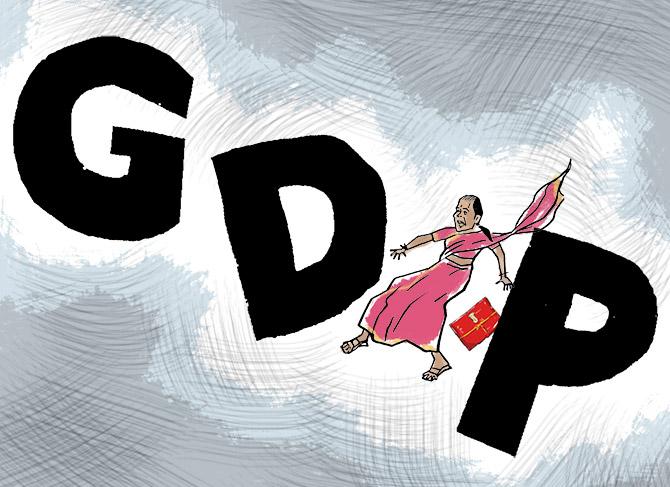India’s economy continues to be robust, but downside risks such as rising crude oil prices, adverse weather conditions, and the global banking crisis outweigh the upside potential in gross domestic product (GDP) growth in the current financial year (FY24), the finance ministry said on Tuesday in its Monthly Economic Review for March.

“We reiterate that downside risks to our official forecast of 6.5 per cent for real GDP growth in FY24 dominate upside risks,” the review said.
“Opec’s surprise production cut has seen oil prices rise in April, off their lows of low-seventies per barrel in March.
"Further troubles in the financial sector in advanced nations can increase risk aversion in financial markets and impede capital flows.
"Forecasts of El Nino, at the margin, have elevated the risks to Indian monsoon rains,” it stated. Although the 6.5 per cent growth projection for FY24 was in line with the estimates of the World Bank and the Asian Development Bank, the report said these factors could affect the favourable combination of growth and inflation outcomes currently anticipated.
“[So] it is important to be vigilant against potential risks…,” it said.
The report said that the fiscal parameters for the Centre and the states in FY23 had been robust, with the ratio of revenue expenditure to capital expenditure in April-February lower than the same period last year.
It said that following the Centre’s capex push, the states had also announced ambitious capex targets for FY24 and were still expected to stick to the fiscal deficit target of 3-3.5 per cent of their GSDP.
“The improvement in expenditure quality is driven by significant capex by the Centre and the rationalisation of revenue expenditure... Broad-based economic activity and robust revenue buoyancy have further led to a consolidation in states’ fiscal deficit target,” it stated.
For FY24, the Centre has announced a record capex target of Rs 10 trillion, including Rs 1.3 trillion in long-term, interest-free loans to the states for their capex needs.
The review warned that global economic prospects continued to be uncertain and the latest crisis to have hit the banks, especially in the advanced economies, had added to this uncertainty.
In its April 2023 World Economic Outlook report, the International Monetary Fund projected global growth to decline from 3.4 per cent in 2022 to 2.8 per cent in 2023.
Growth is forecast to marginally improve to 3.0 per cent in 2024, but not enough to beat the growth rate of 2022 while falling significantly short of the 6.4 per cent mark attained in 2021.
“Elevated inflation and financial tightening, which have weakened the growth process, are thus expected to weigh on economic activity for at least three years since the armed conflict broke out between Russia and Ukraine in February 2022.
"The slowing of global growth, accompanied by pressures from deglobalisation and supply chain disruptions, has also moderated global trade,” the report said.
It said internal macroeconomic stability had further strengthened with easing inflationary pressures in March 2023, driven by the softening of food and core inflation, which fell to a 16-month low.
“The easing of international commodity prices, the promptness of measures taken by the government, and monetary tightening by the RBI have helped rein in domestic inflation.
"Inflationary expectations also appear to be anchoring, as witnessed in various surveys for households and businesses,” it said.
Core inflation, however, in many major economies continues to be sticky, prompting faster than-expected policy rate hikes by central banks.
The recent collapses of a few banks in the US and Europe on the back of this tightening cycle have posed pertinent questions to policy makers on the vulnerability of their financial systems, particularly in emerging market economies, it said.
The review stated that India’s banking system was less prone to the kind of failures seen with Silicon Valley Bank and Signature Bank.
It said banking supervision was robust with the RBI’s overarching coverage of institutions, regardless of asset size, in its bi-annual assessment of financial stability.
“Macro stress tests are also performed from time to time on individual banks. Investment in held-to-maturity (HTM) securities is limited to 23 per cent of deposits, reflecting an effective insulation of asset value from adverse market developments.
"Loans constitute more than 50 per cent of the total assets of the top 10 Indian banks, thereby making them relatively immune to yield spikes,” it said, adding that a rapid withdrawal of deposits was unlikely as 63 per cent of the deposits contributed by the households were considered sticky.
“With the April 2023 update of the WEO projecting India to be the fastest-growing economy in FY24, it is likely to be underpinned by even more robust stability in the macroeconomic variables,” the report stated.











